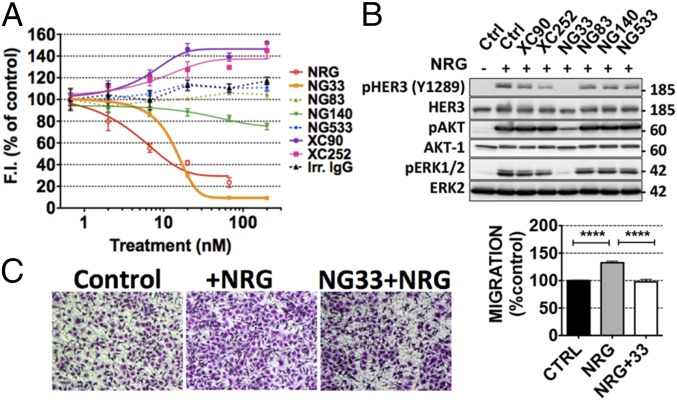Fig. 3.
The anti-HER3 mAb NG33 decreases NRG-induced phosphorylation of HER3, AKT, and ERK, as well as NRG-induced cell migration. (A) NIH/3T3-R2R3 cells coexpressing human HER2 and HER3 were plated on black microplates and incubated for 45 min at 4 °C with increasing concentrations of mAbs to HER3. After washing, we added a fluorescently labeled NRG and incubated for 30 min at 4 °C. Fluorescence intensities (at 670 nm) were determined after three washes. (B) The ability of the indicated mAbs to inhibit NRG-induced phosphorylation of HER3, AKT, and ERK was studied by using N87 cells, which were treated at 37 °C for 20 min with the indicated mAbs (10 µg/mL). NRG (20 ng/mL) was added to the cells and incubated for 10 min. The cells were then lysed, and equal quantities of protein lysates were resolved by using electrophoresis and immunoblotting, as indicated. (C) The capacity of mAb NG33 to inhibit NRG-induced migration was tested by using OVCAR-5 cells that were seeded in the upper compartment of migration chambers. The lower compartment of each chamber was filled with medium supplemented with NRG (10 ng/mL). After 24 h, cells that reached the lower side of the filter were fixed, permeabilized, and stained by using Giemsa. Signals of triplicates were quantified. ****P < 0.0001 (ANOVA and post hoc tests).

